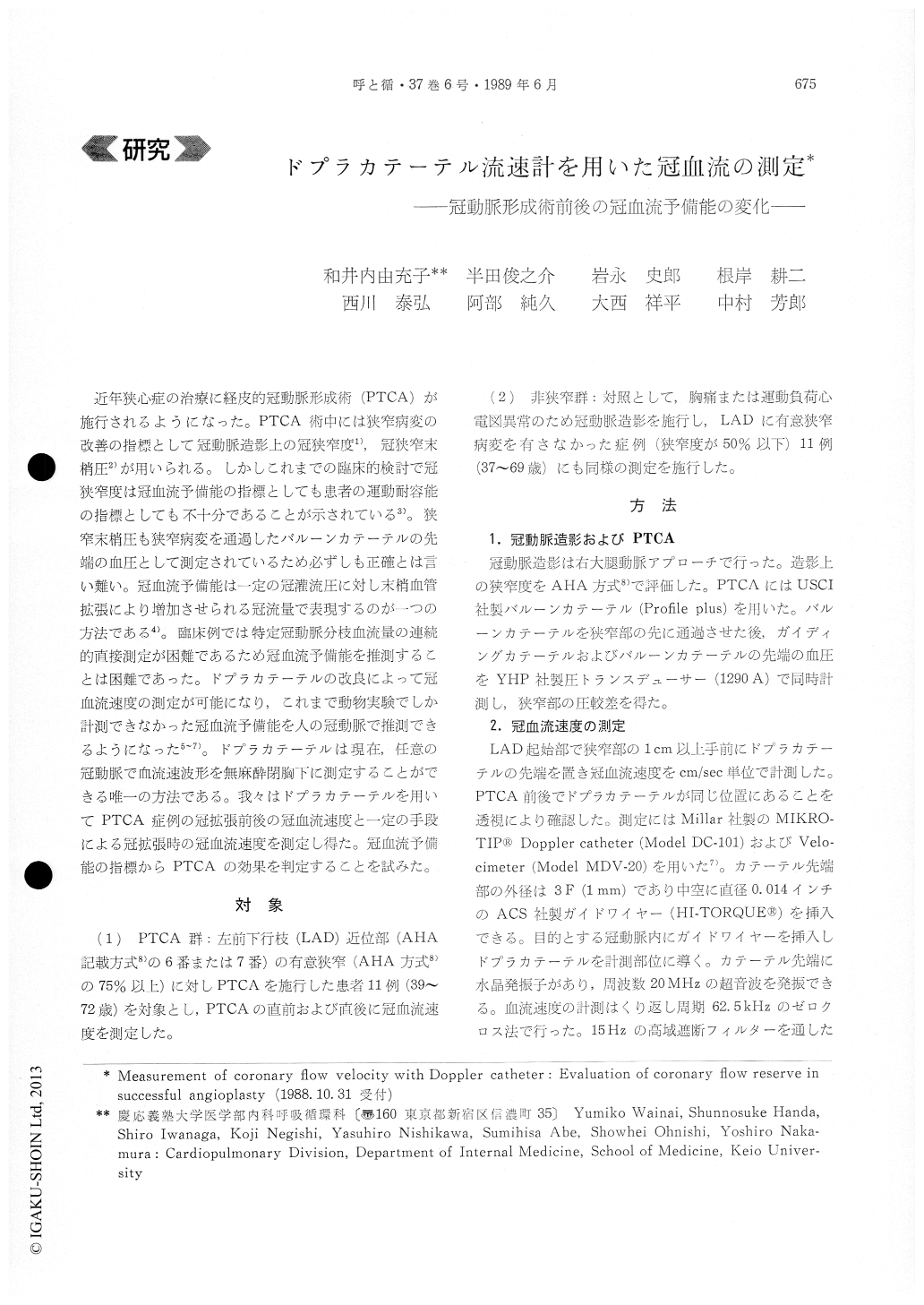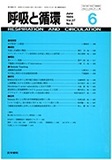Japanese
English
- 有料閲覧
- Abstract 文献概要
- 1ページ目 Look Inside
近年狭心症の治療に経皮的冠動脈形成術(PTCA)が施行されるようになった。PTCA術中には狭窄病変の改善の指標として冠動脈造影上の冠狭窄度1),冠狭窄末梢圧2)が用いられる。しかしこれまでの臨床的検討で冠狭窄度は冠血流予備能の指標としても患者の運動耐容能の指標としても不十分であることが示されている3)。狭窄末梢圧も狭窄病変を通過したバルーンカテーテルの先端の血圧として測定されているため必ずしも正確とは言い難い。冠血流予備能は一定の冠灌流圧に対し末梢血管拡張により増加させられる冠流量で表現するのが一つの方法である4)。臨床例では特定冠動脈分枝血流最の連続的直接測定が困難であるため冠血流予備能を推測することは困難であった。ドプラカテーテルの改良によって冠血流速度の測定が可能になり,これまで動物実験でしか計測できなかった冠血流予備能を人の冠動脈で推測できるようになった5〜7)。ドプラカテーテルは現在,任意の冠動脈で血流速波形を無麻酔閉胸下に測定することができる唯一の方法である。我々はドプラカテーテルを用いてPTCA症例の冠拡張前後の冠血流速度と一定の手段による冠拡張時の冠血流速度を測定し得た。冠血流予備能の指標からPTCAの効果を判定することを試みた。
To assess the therapeutic effect of percutaneous transluminal coronary angioplasty (PTCA) on coro-nary flow reserve, coronary flow velocity (CFV) was measured with a Doppler catheter before and imme-diately after PTCA in 11 patients, who underwent elective PTCA for critical stenosis in proximal ormid portion of the left anterior descending artery (LAD). A Doppler catheter was positioned at the proximal portion of the LAD and the CFV was mea-sured at rest and after intracoronary injection of 6 ml of contrast material (Iopamidol), 6 ml of saline or 3 mg of Isosorbide Dinitrate (ISDN). Peak to resting velocity ratio (PRVR) was calculated as an estimate of coronary flow reserve. Percent diameter stenosis (%S) was measured from cineangiogram. A transle-sional pressure gradient was obtained with an angio-plasty catheter. These parameters measured in PTCA candidates were compared with those in 11 patients whose LAD had no critical stenosis.
After PTCA, %S was decreased (94. 2=1. 4 vs. 34. 1 ±5. 1% ; mean±SEM). Pressure gradient was also decreased (59. 5±4. 9 vs. 25. 1±3. 3 mmHg). There was no difference between mean CFV at rest in pati-ents before PTCA and that in patients without steno-sis (4. 52±0. 63 vs. 5. 46 ± 0. 61 cm/sec). By successful PTCA, CFV at rest was increased (7. 39±1. 32, p< 0.05 vs. before PTCA). PRVRs in patients before PTCA were smaller than those in patients without stenosis (1. 5=0. 1, 1. 4±0. 1, 1. 6=0. 2 vs. 2. 8±0. 1, 2. 5±0. 2, 2. 8±0. 2, p <0. 01 ; by contrast material, saline, ISDN, respectively). After PTCA PRVRs were increased to the same level to patients without stenosis (2. 4±0. 4, 2. 3±0. 3, 2. 2 = 0. 3, p< 0. 05, p<0.01, p <0. 01 vs. before PTCA).
We conclude that successful PTCA increased both coronary flow velocity at rest and flow reserve.

Copyright © 1989, Igaku-Shoin Ltd. All rights reserved.


